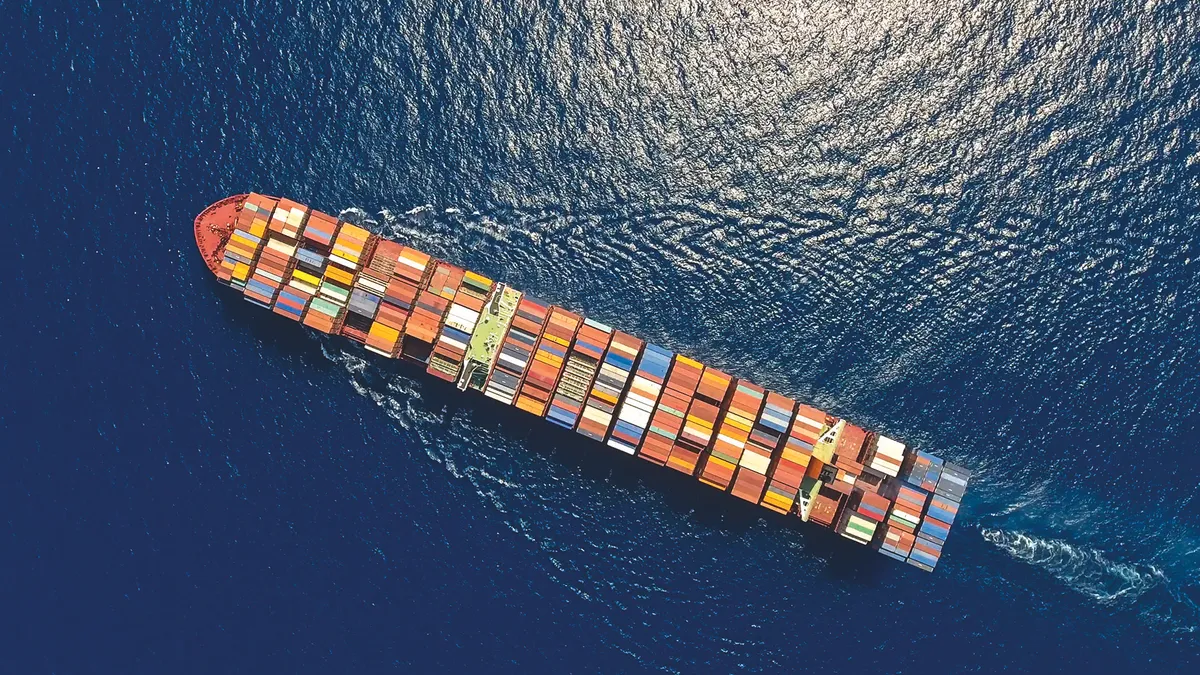Dive Brief:
- Laden imports and total ocean freight volume was still down year over year (YoY) in June, but it improved "considerably" compared to the volume trough in March, according to the latest release from Sea-Intelligence. Laden import volumes were down 7.3% YoY and total handled volumes fell 9.8% YoY at West Coast ports in North America.
- "Given these volume developments, it appears as if the Transpacific trade is over the Coronavirus hump, and perhaps is the indication which prompted the carriers to increase capacity" in the third quarter of this year, Sea-Intelligence CEO Alan Murphy said in a release, adding that capacity for Asia-North America West Coast stands at 13.1%, YoY, and 16.6%, YoY, on Asia-North America East Coast. "This is the strongest capacity growth in a decade," Murphy said.
- Rates on the transpacific route have skyrocketed as a result of the volume return, rising 77% from the end of May to the first week of August, according to data from Freightos on rates from China/East Asia to the U.S. West Coast.
Dive Insight:
Capacity on the transpacific lane has begun to show YoY growth. But as carriers bring more volume into the market rates keep climbing, Lars Jensen, the head of consulting at Sea-Intelligence, said on LinkedIn.
Carriers have announced blank sailings for week 36 (Aug. 31 to Sept. 6), and just five out of 117 trips have been canceled for the week, according to tracking by Drewry.
"The reduction of additional blanked sailings in August and first week of September comes a relief to the shippers, who struggled to secure space since the Covid-19 outbreak and the implementation of the cancelled sailings at an industrial scale," Drewry wrote in a release.
The Port of Oakland, one of the only West Coast gateways to have already reported July figures, saw its highest import level for 2020 in July, which was also a 6% increase compared to the same month last year.
Overall U.S. import volume is still forecast to be down about 10% YoY, according to the latest estimate from the National Retail Federation and Hackett Associates.
Current rates suggest pressure is mostly on Asian cargo bound for the U.S. West Coast, "which is more supportive of a push by shippers to urgently get specific products into the US fast, rather than a more broad-based pick-up in fundamental demand," Jensen wrote.
Norfolk Southern CMO Alan Shaw made a similar point at the end of last month, when asked about intermodal success on an earnings call.
"Since inventories are so low, you're seeing a lot of stuff that's hitting the West Coast as opposed to coming all the way around to the East Coast," Shaw said. "So, that's creating some transloads into 53-foot containers out on the West Coast, which has opened the domestic demand. But I should say that, we do have several ports that we serve where import demand right now is very high as well."
While retailers are restocking shelves, many will likely still act conservatively, when it comes to inventory buying, NRF VP for Supply Chain and Customs Policy Jonathan Gold said in a statement.
"The economy is recovering but retailers are being careful not to import more than they can sell," Gold said. "Shelves will be stocked, but this is not the year to be left with warehouses full of unsold merchandise."
Other carrier modes are also watching what is currently unfolding on the ocean and are optimistic it could mean strong demand for peak.
"Ocean carriers are currently enjoying a good peak, and that's usually a pretty good indicator for us and what our customers expect," Atlas Air CFO Spencer Schwartz said on an earnings call last week.















